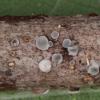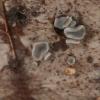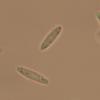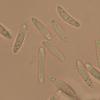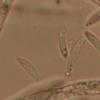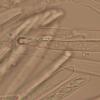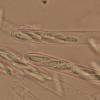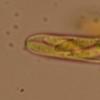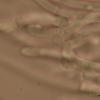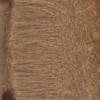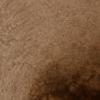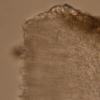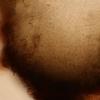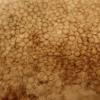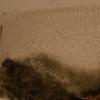
11-11-2025 20:16
Bohan JiaHi, lastly I have found these tiny yellow decayin

09-11-2025 13:20
Hello.A tiny ascomycete, appearing as erupting gra

08-11-2025 00:29
 Francois Guay
Francois Guay
I found this species in Quebec, Canada, on herbace

04-11-2025 09:07
Hello.A suspected Hymenoscyphus sprouting on a thi

04-11-2025 12:43
 Edvin Johannesen
Edvin Johannesen
Hi! One more found on old Populus tremula log in O
Mollisia
Zuzana Sochorová (Egertová),
24-07-2022 14:01
 Hello,
Hello, yesterday I collected this Mollisia.
Ascospores (10.3)10.9-12.9(13) × 2.4-2.8 (3) µm, Me = 11.7 × 2.6 µm
Q = 3.9-5.2; Qe = 4.5
OCl = 2 (several tiny drops), no septate spores observed neither in asci nor outside them
Asci H+, bb, 75-89 × 5.8- 6.6 µm
Subhymenium built if hyaline hyphae.
Cells of the ectal excipulum brownish up to the margin.
No yellow reaction in KOH, the section only becomes lighter.
Locality: Czech Republic, Moravia, 250 m a.s.l., on thin twigs found in the grassland (only broadleaved trees grow nearby)
Using the key by Andreas, Mollisia melaleuca seems to be the best option - but the spores are a bit slimmer than given in the key, and hymenium is not white...
How would you identify this find?
Thank you, Zuzana
Hans-Otto Baral,
24-07-2022 20:44

Re : Mollisia
You have a sequence for this? :-)
Earlier I would have identified this as M. benesuada,e.g. for HB 3936a and numerous pother samples, but then I learned that M. benesuada is a species growing on bark (Ingo called it also alni-corticis).
Especially Ingo's sequenced samples suggest that this is either M. oblonga or M. nodosa, which can only be differentiated by DNA (or by their anamorph).
M. melaleuca could be a species with an OCI of 0, e.g. IW033 in our melaleuca folder. However, Torsten's M. melaleuca 18.VI.2011 has spores like yours and who knows what it is.
Zuzana Sochorová (Egertová),
24-07-2022 21:52

Re : Mollisia
Thank you, Zotto. I felt already in the field that I should better pretend I didn' t see it ???? The key gives OCl = 2 for M. melaleuca. And for M. benesuada is given that brown cells should be located only at the base od apothecium...
I don't have a sequence of this.
I don't have a sequence of this.
Hans-Otto Baral,
24-07-2022 22:08

Re : Mollisia
Yes, M. benesuada is rather light-coloured due to pale excipulum.
Zuzana Sochorová (Egertová),
24-07-2022 22:39

Re : Mollisia
But I would say that in my sample brown cells are located not only at the base - they reach almost the margin (it should be visible in picture "12 of 15" - the section).
Therefore, I jumped to 25b in the key.
(25a Cells of the ect. exc. only at the apo. base brownish (apo. adhered ± punctiform ) ....... 26
25b Cells of the ect. exc. +/- up to the margin brownish coloured ......................................... 28)
Difficult genus for me...
Therefore, I jumped to 25b in the key.
(25a Cells of the ect. exc. only at the apo. base brownish (apo. adhered ± punctiform ) ....... 26
25b Cells of the ect. exc. +/- up to the margin brownish coloured ......................................... 28)
Difficult genus for me...
Hans-Otto Baral,
25-07-2022 09:04

Re : Mollisia
Surely yours is not benesuada (alni-corticis). But as far as I know Andreas does not have oblonga and nodosa in his key, I remember Ingo saying that he even thought this to be American species as they have their types there.
Paradidymobotryum oblongum C.J.K. Wang & B. Sutton, Mycologia 76(3): 572 (1984)
On rotten wood of Ulmus americana: New York
Phialocephala nodosa Tanney & B. Douglas, in Tanney, Douglas & Seifert, Mycologia 108(2): 262 (2016)
Holotype DAOM 628553: Isolated from decaying branch of Acer saccharum: New Brunswick

